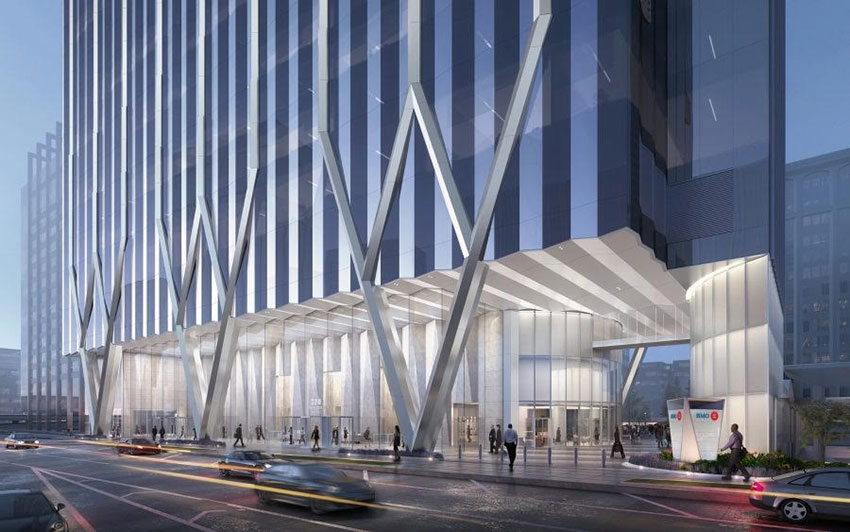Not Quite Your Grandfather's Steel
Is It Still Aspirational To Speak Of Green Steel?
Steel has been described as ideally suited to a circular or cradle-to-cradle economy, in which materials are durable enough that many structures, particularly well-maintained buildings and bridges, remain in use as long as possible, and reuse or recycling replaces the disposal and waste that characterize the late phase of products' life in a linear economy (World Steel Association). Steel production inevitably consumes large amounts of energy; its full energy and carbon footprints depend on how that energy is produced. General comparisons of the relative environmental burdens placed on the Earth by steel and its structural competitors (concrete, with its well-known heavy footprint largely due to Portland cement, and engineered timber, the relative newcomer widely considered practical only on certain scales) are a topic for other settings; suffice it to say that as a durable material made largely from recycled scrap in the U.S., steel in general is far greener than some assume. Over 90 percent of American structural steel has recycled content, making the U.S. the global leader in this metric.

Image courtesy of Binyan Studios & BIG – Bjarke Ingels Group
A series of green spaces wraps the 1,005-foot-high, BIG-designed Spiral tower, creating a double-height atrium at every terrace.
Because the two manufacturers of A913 available in North America have both moved to energy-efficient production methods drawing on renewable energy sources, and because steel products are fully and continuously recyclable at the end of their usable lives, there is a coherent argument that specifying A913 aligns with the goals of sustainable construction on both the single-building and the global levels.
Stine notes that from an environmental standpoint, “high-strength steel not only continues to allow you to use less tonnage to get to the strength that you need; the big benefit of things like A913 is the way it's produced.” Unlike traditional steel mills that use a blast furnace and basic oxygen furnace (BF-BOF) and a high proportion of iron ore, mills producing A913 use the electric arc furnace (EAF) method, fed by recycled scrap, and with a substantially lighter energy and carbon footprint than either BF-BOF or EAFs using direct reduced iron. The International Energy Agency ranks the iron and steel industry first in carbon dioxide emissions and second in energy consumption among heavy industries (IEA, 2020) but also describes scrap-based EAF as “60 to 70 percent less energy-intensive than the other routes,” BF-BOF and direct-reduced-iron EAF (IEA, 2021). Along with shifting the proportion of steelmaking from BF/BOF technology to scrap-based EAF, there has been speculation in Europe that decarbonization efforts can make further headway by replacing fossil fuels as reductants in direct-reduced-iron production with green hydrogen, which is currently costly to produce but is on a path toward cost competitiveness (Hoffmann et al.).
Stine asserts that “100 percent of every type of steel that we make is through electric arc furnace, which means everything is comprised of scrap.” BF-BOF is more prevalent outside the U.S.; “that is the carbon suck,” she says. “When you see the statistics of what's the global warming potential of the world steel industry, it's because of that blast oxygen furnace.” The industry is currently divided between the methods, with EAF users generating “a fraction of the greenhouse-gas emissions” of the older BF/BOF method. “We are committed to an EAF for everything that we do, and we are going to continue to bring that down to zero. We're going to have Net Zero steel in the future.”
This manufacturer has launched a Net Zero certification extending to all its metals, including those in the construction sector. The designation addresses Scope 1 and Scope 2 emissions under the 2015 Paris Climate Agreement (direct emissions from steelmaking and indirect emissions from electricity generation, respectively), while the firm is exploring potential reductions in Scope 3 (emissions attributed to upstream and downstream operations) voluntarily.
Steels outside the construction sector, incidentally, will soon have similar strength-to-weight ratios. “What's coming in the world of high-strength plate products would be something like A913, but a similar grade for plate,” Stine adds. “It'll have the same attributes.” The firm is building an all-EAF plate mill, aiming to produce the nation's thickest, highest-grade plate steel. “It's not just for bridges and buildings,” says Stine; “it's so important that so much funding for sustainability and renewable energy that Biden Administration is pushing so much for, wind and that offshore market, is going to be fed through this huge plate product that we're going to be bringing, to be able to build those towers as wind turbines. They will be able to continue to reduce our dependence on coal power.”
Although this new mill is in a coal-producing state–according to the Energy Information Administration, 69 percent of the state's electricity was still generated by coal-fired power plants as recently as 2020─the plan calls for virtual power purchase agreements with renewable projects elsewhere, supplying steel for offshore wind towers and solar farms and reducing its own Scope 2 attributed greenhouse-gas emissions at its new plant. “We have renewable energy through wind and solar that we're using to fuel our steel mills, and we will get there,” Stine continues. Like many claims of Net Zero status across different industries, she acknowledges, her company’s is based on a combination of renewable energy sources and carbon offsets: “Initially, it's the purchase of reputable high-level carbon offsets in the market, but that's step one. In the future, it will be doing things that we can do at our mills,” including carbon capture and underground injection, biochar carbon sequestration, and other methods. The proportion of renewable energy directly used in its plants is not yet public information, she reports, “but there's many different things that we're going to do every single day to be able to get to Net Zero on our own without the purchase of offsets.”
Finnigan points out that her firm also manufactures A913 with an EAF. The product “has a specific supply chain, and so it's possible for the end user to really drill down into what the carbon impact is of that material from a mill-specific route, and so going based on that versus the industry averages, you can see some really great returns on the carbon footprints of your project, so you would get a return from not only the reduction in weight, but also by drilling into the mill-specific EPDs [environmental product declarations], for example, you'd be able to see what the specific global warming potential is of that material. Aside from that, there are also benefits that come from the rest of the supply process; when it comes to material being transported to site, you can see some reduction in cost. When it comes to constructability, using a higher-strength steel will not only reduce the weight of material in your project, but in some cases, it can also lead to a reduction in, for example, the capacity of the crane that might have to be used on site, so having less material can have all sorts of knock-on effects that can also bring value to the project.”
Catchphrases like “green steel” are more meaningful when supported by emissions information such as global warming potential (GWP), the Environmental Protection Agency's metric for calculating and reporting emissions in ways that allow meaningful comparisons. One manufacturer's EPD provides detailed calculations of direct and indirect impacts; the other has an EPD covering the mill where its A913 is made plus a plant that makes non-A913 hot-rolled structural steel. (The AISC has also posted an older categorical EPD for U.S.-made hot-rolled structural steel, averaging data from three producers, two of which do not make A913; it is valuable for analyzing the GWP of the fabrication process but not as specifically informative as the manufacturers' EPDs.)
All factors considered, both of the available A913 products are an advance on its predecessor A992, and on other structural options, for any project guided by an awareness that the design/engineering/construction sector's steadily improving environmental performance needs to continue and accelerate in the coming years.











